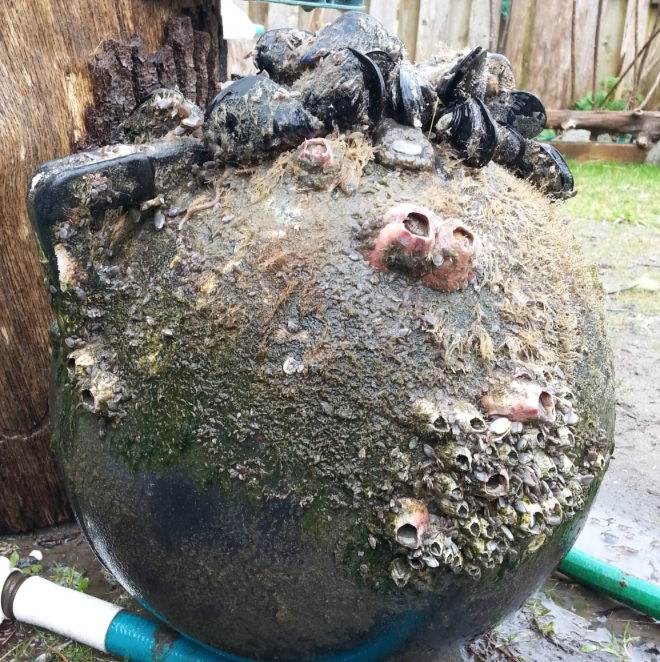
Scientists warn of increasing threats posed by invasive alien species
In a new study with participation of the University of Konstanz, scientists from around the world warn that the threats posed by invasive alien species are increasing. They say that urgent action is required in order to prevent, detect, and control invaders at both local and global levels.
Alien species are plants, animals and microbes that are introduced by people, accidentally or intentionally, into areas where they do not naturally occur. Many of them thrive, spreading widely with harmful effects on the environment, economy, or human health.
The study, published in Biological Reviews, was carried out by an international team of researchers from 13 countries across Africa, Asia, Australasia, Europe, North and South America. It states that the number of invasive alien species is increasing rapidly, with over 18,000 currently listed around the world.
Global escalation
The researchers attribute the escalation in biological invasions to the increase in the number and variety of pathways along which species spread, and to the increasing volume of traffic associated with those pathways. They highlight the role of emerging pathways such as the online trade in unusual pets, and the transport of species across oceans on rafts of plastic.
The study also shows how other drivers of global change, such as climate change, land-use change, alongside international trade are exacerbating the impacts of biological invasions. For example, species transported through shipping can now thrive in new regions, owing to climate warming; and the permanent opening of the Arctic Ocean with global warming is allowing marine species to move between the Atlantic and Pacific Oceans.
Warning to humanity
The paper is a part of the World scientists’ warning to humanity: a second notice initiative calling for urgent change in our stewardship of the Earth and the life on it. The authors stress that biological invasions can be managed and mitigated. They point to approaches that are working around the world and make specific recommendations for improved management. For example, the introduction of more stringent border controls, including X-ray machines and detector dogs, has led to a progressive decline in the rate of fungal plant pathogens entering New Zealand.
Professor Mark van Kleunen, an ecologist at the University of Konstanz, says: “It has been very exciting to see developments in our knowledge and understanding of biological invasions in recent decades, achieved through truly inspiring global collaborations. It is so important that we continue to share our knowledge and engage with relevant stakeholders across sectors and borders”.
What is the scale of the problem?
A recent analysis of global extinctions in the Red List database of the International Union for Conservation of Nature (IUCN, 2017) revealed that alien species contributed to 25 per cent of plant extinctions and 33 per cent of terrestrial and freshwater animal extinctions. Meanwhile, annual environmental losses caused by introduced species in the United States, United Kingdom, Australia, South Africa, India and Brazil have been calculated at over 100 billion US dollars.
Action against invasive species
Since 1992, the importance of taking action against invasive alien species globally has been widely recognized (Millennium Ecosystem Assessment, 2005). The recent global assessment report on biodiversity and ecosystem services by the Intergovernmental Science Policy Platform on Biodiversity and Ecosystem Services (IPBES) ranked invasive alien species fifth among direct drivers of change in nature with the largest relative global impacts, after changes in land and sea use, direct exploitation of organisms, climate change, and pollution.
Facts:
- In a new paper in Biological Reviews, an international team of researchers from 13 countries across Africa, Asia, Australasia, Europe, North and South America – including ecologist Mark van Kleunen from the University of Konstanz – draw attention to the growing threat posed by invasive alien species, calling for urgent action to prevent, detect, and control invaders at both local and global levels.
- Recent analyses (2017) reveal that alien species contributed to 25 per cent of plant extinctions and 33 per cent of terrestrial and freshwater animal extinctions.
- Original publication: Pyšek P., Hulme P. E., Simberloff D., Bacher S., Blackburn T. M. Carlton J. T., Dawson W., Essl F., Foxcroft L. C., Genovesi P., Jeschke J. M., Kühn I., Liebhold A. M., Mandrak N. E., Meyerson L. A., Pauchard A., Pergl J., Roy H. E., Seebens H., van Kleunen M., Vilà M., Wingfield M. J. & Richardson D. M.: Scientists’ warning on invasive alien species. Biological Reviews. URL: https://doi.org/10.1111/brv.12627
- The paper is a part of the World scientists’ warning to humanity: a second notice, a global initiative of scientists first launched in 1992 that is calling for urgent change in how humanity is addressing global environmental challenges.
